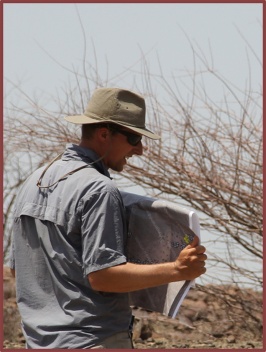 Xavier is a limnogeologist based at the Institut National de Recherches Archéologiques Preventives (National Institute of Preventative Archaeological Research, or INRAP) in Lyon, France. Prior to joining the WTAP in 2010 and refocusing his work on the East African Rift System (EARS) Xavier worked at Lake Baikal in central Asia.
Xavier is a limnogeologist based at the Institut National de Recherches Archéologiques Preventives (National Institute of Preventative Archaeological Research, or INRAP) in Lyon, France. Prior to joining the WTAP in 2010 and refocusing his work on the East African Rift System (EARS) Xavier worked at Lake Baikal in central Asia.
Limnogeology is the study of sediments formed by inland waters (e.g. lakes, ponds, rivers, wetlands), and in West Turkana Xavier’s specific research interest is the sedimentary cyclicity and temporal evolution of lake deposits, which he uses to reconstruct past climatic, tectonic, and environmental changes and how they influenced hominin evolution during the Plio-Pleistocene. His approach involves identifying sequences of ancient lake sediments where they are exposed in the Nachukui Formation and performing detailed sediment analyses to determine the processes and contexts (deep, shallow, endorheic etc) that led to their deposition. As the largest endorheic water body in a desert on earth, Lake Turkana has undergone remarkable changes in size, shape, and hydrology over time, and has played a key role in affecting the environments and locations that were available for hominins to exploit.
In his own words
What do you like about being in the field in Turkana?
“The inescapable heat, lack of water, and the unexpected incidents that take place, no matter how prepared you are.”What do you miss when you are in the field?
“When I’m in France I often dream of being in Turkana, and when I’m in Turkana, I dream about being back in France…we always want what we don’t have.”How would you describe your role in the WTAP team?
“I am a geologist but, in Turkana, I just happen to pass the time searching for drinking water as well!”
For more information about Xavier’s research or to contact him directly, please visit his page on Researchgate
